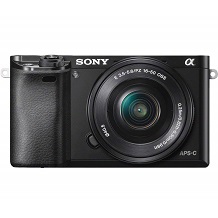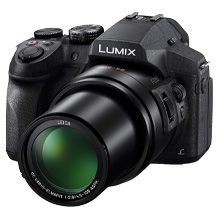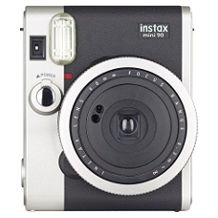Video camera purchasing advice: how to choose the right product
- What you need to know
- A camcorder is a combination of camera and recorder, or image and sound.
- With camcorders, all the important moments in life can be captured in picture and sound for eternity.
- Camcorders have a tough time compared to digital cameras and smartphones, but they do offer some advantages.
- The nature of a camcorder depends on the purpose for which it will be used.
What distinguishes a camcorder?
With a camcorder, unforgettable and precious moments in life can be captured in pictures. Camcorders come in different designs and with different features. The more expensive a device is, the more it offers. Therefore, before buying it is important to learn about the features of standard equipment and which are actually needed.

The term camcorder is a cross between camera and recorder. This illustrates that a camcorder consists of two distinguishable components, more specifically a video camera that has a recorder built into it. This makes it possible to set the moving images to music. Analog devices have been superseded by digital camcorders, which has affected nearly all camcorder features. Even if the basic technology of camcorders is more or less uniform, there are differences in terms of equipment features, which are also based on the respective use.
What can a camcorder do?
All the important moments in life can be captured with the camcorder and recorded for eternity. Camcorders also perform well in training and seminars when it comes to capturing specific sequences in images for participants. Furthermore, they can record participant presentations for subsequent analysis. Camcorders are also used in sports to monitor performance, point out errors and improve and optimize based on the recordings. Camcorders are also used as surveillance devices, and modern devices can be controlled via WIFI with a smartphone. Camcorders also leave room for implementing your own artistic ideas and developing your own film and theater projects. With their help, professional and private projects can also be documented on film, as proof or as part of one’s own history.
The different designs and functionalities
Camcorders have different designs, sometimes closely related to their functionality. The most common designs are listed below.
Handheld camcorder
The most popular external form for a camcorder is the handheld camcorder, which is guided and held with one hand and secured with a strap. It features a compact design and a fold-out small monitor that replaces the viewfinder. In some devices, it is designed as a touchscreen that can be used to operate all functions. The handheld camcorder fits well in the hand as it is much more compact.
The pistol grip
Out of fashion is the pistol grip, which owes its name to the handle pulled down. Just like the handheld camcorder, there is a fold-out and rotatable LCD monitor. The advantage of this design is the ease of guiding the device, as well as the much smaller form. The disadvantage of a pistol-grip camcorder is that the small device only has room for simple technology.
Shoulder and handheld cameras
With regard to the carrying and posture design, a distinction is made between shoulder-mounted cameras and handheld cameras. Handheld cameras are the handheld camcorder and the pistol grip camcorder. Shoulder cameras have an indentation on the bottom to allow them to be placed stably on the shoulder while stabilized with one hand. Handheld cameras are lighter and more compact than shoulder-mounted cameras. The viewfinder is mounted on the side of a shoulder-mounted camera, and on the rear end of a handheld camera.
The compacts
There are also camcorders that resemble a smartphone due to their flat and compact design. The operation works via a display with buttons underneath. This camcorder is lightweight, fits flat in the hand and fits in your pocket. However, there is little room left for technology, so this camcorder is suitable for quick and short sequences.
Action camcorder
It is mainly mountain enthusiasts and extreme athletes who produce spectacular recordings with so-called action camcorders. In keeping with their name, these camcorders are attached to the helmet, body or vehicles with various mounts and provide moving images from the first-person perspective of the athlete. Action cams are lightweight and rugged, shockproof and often waterproof. This is especially true for helmet cameras, which are particularly small, weigh only a few grams and therefore do not have a display. Due to the small lens, the light sensitivity is limited. In favor of waterproofing, a zoom and the possibility to work with effects are missing.
3D camcorder
A modern variant are 3D camcorders. Currently, these camcorders are not yet fully developed and are also expensive. They have two optics that record the same thing, but slightly offset in time. 3D camcorders are used to create videos in 3D, which have their effect when played back on the corresponding TV sets.
How a camcorder works
Theheart of a camcorder is the lens, which is usually located in the front. Light falls through them and is collected by a light-sensitive sensor. It is divided into very many small areas, for each of which a processor individually calculates the brightness and color value in particular. The camcorder’s built-in computer assembles the numerous small areas into one image. The system can correct errors independently so that the user receives a perfectly illuminated image as a result.
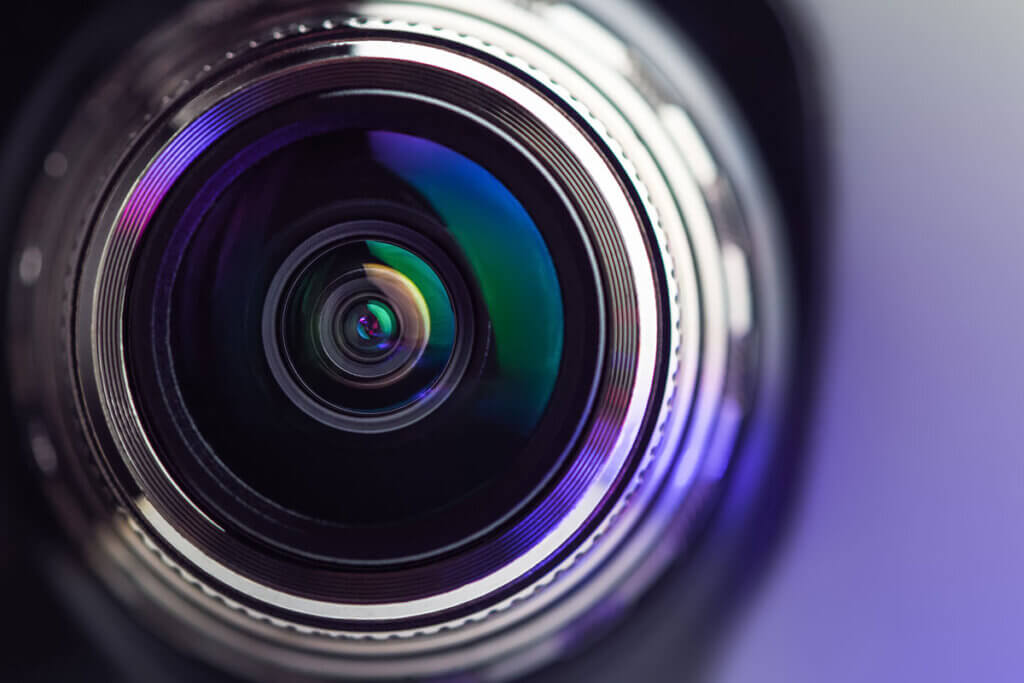
Depending on the number of small areas called pixels, a sharp or less sharp image can be produced. The higher the number of pixels, the better the final result and the larger the video file will be.
To reduce the amount of data, there are several compression formats that can be used to reduce large files to a minimum. If you choose a lossless format, for example AVI, you can reduce the file size with a computer program. AVI stands for “Audio Video Interface” and is a video format from Microsoft. With these very small pixel areas, cross-fades can occur, which can be heard as noise. This problem occurs in poorly lit rooms, for example, which can only be compensated by a high-quality processor. Ambient sounds are recorded via the microphone and can be post-processed on the computer using editing software. Most camcorders use a powerful rechargeable battery as a power source, with a minimum duration of around two hours. Mains operation is also possible, but this comes at the expense of mobility.
The advantages and disadvantages
A camcorder offers many advantages, which concern not only the technology, but especially the wide range of applications. Nevertheless, there are also disadvantages:
Advantages
- Due to its sturdy construction and state-of-the-art technology, a camcorder is ready for use anywhere.
- Some models defy low temperatures below freezing and are waterproof.
- Sophisticated automatics during recording
- Very good video and sound quality
- Due to their ergonomics, camcorders are better suited for filming than other devices equipped with an additional video function.
- A camcorder’s motion, focus, and stabilizer systems are optimized for moving images.
- Modern devices are inexpensive and easy to use.
Disadvantages
- Thanks to the higher number of pixels, cameras have a higher light sensitivity compared to a camcorder and offer the possibility to play with focus shifts.
- Video post-processing with an editing program is a performance hog, which requires a powerful computer with a large amount of RAM.
- Most of the time, camcorders have a low battery life, so a spare battery is recommended for longer movie sequences.
The recording formats of camcorders
It’s not easy to find your way around camcorder recording formats without any prior knowledge. DV for Digital Video was the standard format for a long time. However, it has been supplanted by digital recording formats since the mid-1990s.
Amateur or professional equipment?
The purpose for which the camcorder is purchased is also important. When it comes to capturing certain stages of life, vacation experiences or other snapshots in life on film, a hobby camcorder is the right choice. It is different if the camcorder is to be used for music videos, amateur movies or other professional activities. Then it’s worth buying a professional camcorder.
DV format
The DV format was originally intended for amateur filmmakers, but due to its good quality it has also established itself in the professional sector. It features significantly better image quality, precise editing capabilities, and lossless copying compared to analog recording. The individual images are compressed using Motion JPEG technology and stored on the tape cassette. An alternative is to save it on a mini DVD or on a built-in hard drive. The images are compressed using the MPEG-2 method.
High resolution HD camcorders
HD camcorders are divided into AVCHD (Advanced Video Codec HighDefinition) camcorders and HDV camcorders, both of which support HD resolution but differ in terms of storage media:
The AVCHD camcorder …
… saves movies to a memory card, hard disk or DVD using the MPEG-4 process, whereby the storage medium can be freely selected. The file sizes are smaller than with the MPEG-2 method while the image quality remains the same. Another advantage of tapeless camcorders is that the image sequences can be edited immediately. They can be rearranged, cut and deleted directly on the camcorder.
The MPEG-2 process …
… is used with HDV camcorders that use tape cassettes as storage media.
The disadvantage of HD camcorders compared to DV format is that the data is more compressed, which means that more losses can occur, while DV stores lossless. MPEG-2 and MPEG-4 are used outside the amateur sector for archiving already finished films. With each subsequent edit, compression occurs again, resulting in further losses.
Camcorder with modern storage media
Nowadays, almost only camcorders are produced that work with memory cards, just like digital cameras. Because they are so small and compact, camcorder dimensions have also shrunk. Memory cards not only have a larger storage capacity. With modern storage media, any access is possible in addition to sequential access, because the individual scenes are stored as individual files, eliminating the need for time-consuming rewinding. SD memory cards (secure digital), SDHC and SDXC have become the most popular, but they require large memories. For this purpose, some camcorders have an additional internal memory, the so-called flash memory.
Quality criteria to consider when buying a camcorder
There are some criteria that influence the purchase of a camcorder, but they also depend on personal preferences and desired features:
| Recording quality | The most important criterion for choosing a camcorder is the image quality. Depending on your budget, a Full HD camcorder that has Full HD resolution is recommended. Some professional models even capture images in 4K resolution, which has its price. |
| Sound quality | The sound quality of smaller models is often miserable. Camcorders that have a connection for an external microphone or wind noise reduction have an advantage. |
| Illumination | Most camcorders have a video light and flash that provide the necessary brightness. |
| Optical viewfinder | An optical viewfinder is an advantage when image control is not possible using the display, for example due to intense sunlight. |
| Sensor and lens | The larger the sensor, the better the image quality, although the nature of the lens also influences the result. A high light sensitivity ensures that shots succeed even in a darker environment, while the optical image stabilizer compensates for small shakes while filming. |
| Optical zoom | A decisive advantage of camcorders over smartphone cameras is the optical zoom, which produces an image with consistent image quality even at the highest zoom level. In hobby camcorders, the optical zoom is ten to 30 steps, while in professional devices it often offers magnifications of 50 steps and more. |
| LCD display | In modern camcorders, the LCD display replaces the normal viewfinder. It should definitely be anti-reflective so that the view of the recording is good even in bright sunlight. |
| Accessories | With the right accessories, anyone can become a professional filmmaker. This includes, for example, a spare battery, lenses, cleaning utensils and memory cards. |
Image 1: © Photo_Ma / stock.adobe.com | Image 2: © borislav15 / stock.adobe.com

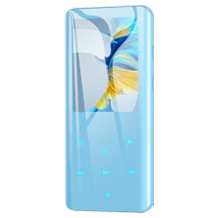
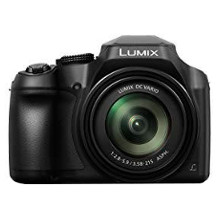
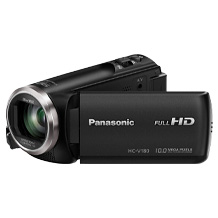
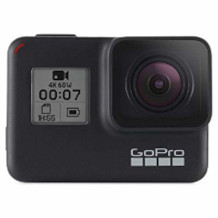

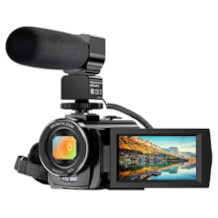
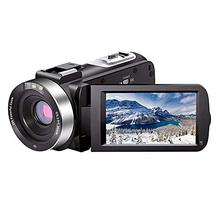
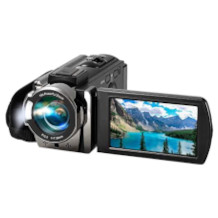
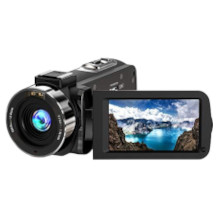
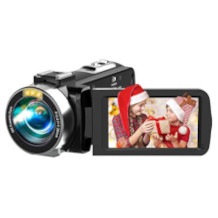

 944 reviews
944 reviews
